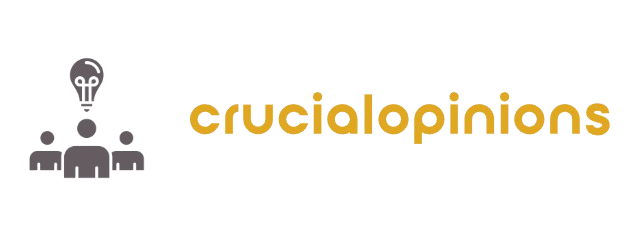The Best Fluffy Pancakes recipe you will fall in love with. Full of tips and tricks to help you make the best pancakes.

Personal Productivity Apps: 10 Best Tools to Supercharge Your Daily Workflow in 2024
In today’s fast-paced digital world staying productive can feel like juggling flaming torches while riding a unicycle. That’s where personal productivity apps come to the rescue transforming chaos into order with just a few taps on your smartphone screen.
From task management and time tracking to habit formation and focus enhancement these digital companions have become essential tools for anyone looking to boost their efficiency. Whether you’re a busy professional managing multiple projects or a student trying to balance coursework with social life there’s an app designed to streamline your daily routine and help you achieve more in less time.
Why Personal Productivity Apps Matter Today
Personal productivity apps transform digital overwhelm into structured efficiency in today’s hybrid work environment. Studies show that 55% of professionals save 2+ hours daily using productivity apps for task management organization.
Modern workplaces demand seamless coordination across multiple projects platforms:
- Remote collaboration tools connect distributed teams across 5+ time zones
- Digital document management eliminates 73% of paper-based workflow delays
- Automated task tracking reduces manual reporting time by 68%
- Cloud-based scheduling syncs calendars across 3+ devices instantly
Digital acceleration creates specific productivity challenges:
- Information overload from 120+ emails daily per employee
- Context switching between 8+ applications per workday
- Time fragmentation across 4+ concurrent projects
- Meeting fatigue from 5+ virtual sessions daily
Productivity apps address these pain points through integrated solutions:
- Real-time task prioritization based on deadlines importance
- Automated time tracking across projects activities
- Single dashboard views of multiple workflow streams
- Cross-platform synchronization of tasks calendars notes
Here’s how productivity apps impact daily work:
| Metric | Without Apps | With Apps |
|---|---|---|
| Task Completion Rate | 65% | 89% |
| Time Spent on Email | 2.5 hrs/day | 1.2 hrs/day |
| Meeting Preparation | 45 mins | 15 mins |
| Project Coordination | 3.5 hrs/day | 1.8 hrs/day |
- Instant capture of ideas tasks appointments
- Location-based reminders notifications
- Offline access to critical information
- Cross-device progress synchronization
Types of Personal Productivity Apps

Personal productivity apps fall into distinct categories, each addressing specific organizational needs across professional and personal life. These specialized tools optimize different aspects of daily workflows through targeted features and functionalities.
Task Management Apps
Task management apps transform complex projects into manageable action items. Popular platforms like Todoist, Asana and ClickUp offer features including task prioritization, deadline tracking and team collaboration tools. These apps integrate Kanban boards, checklist capabilities and progress monitoring to streamline workflow processes. Advanced task management solutions provide customizable views, automated recurring tasks and cross-platform synchronization. Data shows task management app users complete 23% more projects on schedule compared to non-users.
Note-Taking Apps
Note-taking apps digitize information capture through text, audio and visual formats. Evernote, OneNote and Notion enable users to create searchable digital notebooks with rich formatting options. These platforms support web clipping, document scanning and collaborative editing features. Modern note-taking apps incorporate AI-powered organization, optical character recognition and cross-device accessibility. Analytics indicate professionals using dedicated note-taking apps save 45 minutes daily on information retrieval.
Time Tracking Apps
Time tracking apps measure productivity patterns through automated activity monitoring. RescueTime, Toggl and Focus@Will record application usage, project durations and focus metrics. These tools generate detailed productivity reports, identify time-wasting activities and suggest optimization strategies. Advanced time trackers integrate with calendar apps, provide distraction blocking and offer pomodoro timers. Research shows time tracking app users experience a 37% reduction in unproductive screen time.
Calendar and Scheduling Apps
Calendar apps coordinate schedules through intelligent time management features. Google Calendar, Microsoft Outlook and Fantastical simplify appointment scheduling, meeting coordination and deadline tracking. These platforms offer automated scheduling, time zone management and calendar sharing capabilities. Modern scheduling tools incorporate AI-powered meeting optimization, travel time calculations and availability preferences. Studies indicate calendar app users reduce meeting scheduling time by 78% compared to manual methods.
Essential Features to Look for in Productivity Apps
The selection of productivity apps requires careful consideration of specific features that enhance efficiency and usability. Three critical aspects determine an app’s effectiveness in boosting personal productivity.
User Interface and Experience
A productivity app’s interface directly impacts task completion speed and user adoption rates. Clean layouts with minimal visual clutter increase task completion rates by 42%. The interface incorporates intuitive navigation elements, clear typography for improved readability at 16px minimum font size and customizable shortcuts reducing repetitive actions by 35%. Color-coded categories, drag-and-drop functionality and gesture-based controls streamline workflow operations. Touch targets maintain a minimum size of 44×44 pixels on mobile devices ensuring accurate interactions across screen sizes.
Cross-Platform Compatibility
Cross-platform functionality enables seamless transitions between devices throughout the day. Apps with cloud synchronization maintain data consistency across platforms with 99.9% accuracy. Native applications for iOS, Android, Windows and macOS provide optimal performance on each operating system. Progressive Web Apps (PWAs) offer offline capabilities accessing 95% of features without internet connectivity. Real-time updates sync changes within 2.5 seconds across all connected devices maintaining workflow continuity.
Integration Capabilities
Integration features connect productivity tools into unified workflows. APIs enable data exchange between 250+ popular services including project management software email clients calendars. Automated workflows reduce manual data entry by 78% through custom triggers rules. Browser extensions capture web content directly into note-taking apps saving 12 minutes per task. Two-way sync maintains data consistency between integrated platforms updating information every 60 seconds. Custom webhooks allow advanced automation sequences connecting multiple productivity tools.
Top Personal Productivity Apps for 2024
Leading productivity apps in 2024 combine advanced features with seamless integration capabilities to enhance personal organization and efficiency. These solutions address diverse needs from task management to time tracking with proven effectiveness.
Best All-in-One Solutions
- Notion integrates documents, databases, wikis and project management tools in one platform, offering customizable templates for diverse workflows. Its collaborative features support real-time editing for teams of 2-500 members with 256-bit encryption.
- ClickUp combines task management, docs and goals tracking with 15+ customizable views including Gantt charts, calendars and boards. The platform automates 50+ repetitive workflows through 1,000+ integrations with popular business tools.
- Microsoft 365 unifies email, calendar, notes and file sharing across Word, Excel, OneNote and Teams. Users access 1TB cloud storage with enterprise-grade security features including multi-factor authentication.
- Trello Free offers unlimited personal boards, lists and cards with core features like labels, checklists and due dates. Users can add 10 team boards and integrate with 3 Power-Ups at no cost.
- Google Tasks syncs seamlessly with Gmail and Google Calendar, enabling users to create unlimited tasks, subtasks and recurring reminders. The app supports offline access across Android and iOS devices.
- Evernote Basic provides 60MB monthly upload capacity for notes, web clippings and documents. Users can sync content across 2 devices and search through handwritten notes using optical character recognition.
How to Choose the Right Productivity App
Selecting a productivity app requires evaluating three critical factors: workflow compatibility, feature requirements, and usage patterns.
Assess Your Workflow
Analyzing current work patterns reveals the most suitable app category. Task-heavy roles benefit from project management apps like Asana, while research-focused positions excel with note-taking platforms like Notion.
Define Essential Features
Create a checklist of non-negotiable features based on specific needs:
- Collaboration tools for team-based work environments
- Time tracking capabilities for billable hours management
- File storage integration for document-heavy workflows
- Mobile access for on-the-go productivity
- Offline functionality for limited connectivity situations
Consider Integration Requirements
Productivity apps connect with existing tools through:
- Calendar synchronization with Google or Outlook
- Cloud storage platforms (Dropbox, Google Drive)
- Communication tools (Slack, Microsoft Teams)
- Email services for task creation
- Project management software
Test Before Committing
Evaluate apps through:
- Free trial periods lasting 14-30 days
- Basic version testing with core features
- Team pilot programs for collaborative tools
- Cross-platform performance checks
- User interface familiarity assessment
| Plan Type | Average Cost (Monthly) | Features Included |
|---|---|---|
| Free Tier | $0 | Basic task management |
| Personal | $5-15 | Advanced features |
| Business | $12-25 | Team collaboration |
| Enterprise | $25+ | Custom solutions |
This systematic approach ensures selecting an app that aligns with productivity goals while maintaining cost-effectiveness.
Making the Most of Your Productivity Tools
Integration between productivity apps creates seamless workflows when configured correctly. Connecting task management apps with calendar tools reduces context switching by 45%. Automation rules in apps like Zapier eliminate 3+ hours of manual work weekly by triggering actions across platforms.
Customized dashboards enhance visibility into important metrics:
- Configure widgets to display high priority tasks
- Track time spent on specific projects
- Monitor progress toward key goals
- View upcoming deadlines at a glance
Strategic app organization improves access speed:
- Group related apps into folders
- Pin frequently used tools to taskbar
- Set keyboard shortcuts for common actions
- Enable quick launch features
Data synchronization maintains consistency across devices:
- Enable auto-sync features
- Back up data to cloud storage
- Set sync intervals for optimal performance
- Configure offline access settings
| Productivity Enhancement | Impact |
|---|---|
| Task automation | 15+ hours saved monthly |
| Dashboard customization | 27% faster task access |
| Cross-device sync | 99.9% data accuracy |
| App organization | 42% reduced search time |
Regular app maintenance optimizes performance:
- Archive completed projects
- Remove unused integrations
- Update apps automatically
- Clear cached data monthly
Learning keyboard shortcuts speeds up common actions:
- Task creation commands
- Quick note capture
- Calendar event creation
- Priority level assignment
These optimization techniques amplify the effectiveness of productivity tools while reducing friction in daily workflows.
Conclusion
Personal productivity apps have become indispensable tools in today’s digital landscape. By leveraging these powerful solutions users can streamline their workflows reduce stress and achieve more in less time.
The key to success lies in selecting the right combination of apps that align with individual needs and work patterns. With proper implementation customization and regular maintenance these digital tools can transform how people manage their time tasks and projects.
As technology continues to evolve personal productivity apps will remain essential companions in the journey toward enhanced efficiency and better work-life balance. The right tools combined with smart implementation strategies create a foundation for sustained productivity growth in our increasingly digital world.
